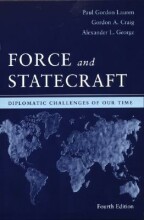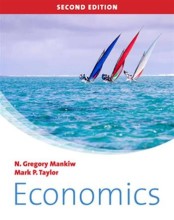Intergovernmental organisations, nongovernmental organisations and international law
20 important questions on Intergovernmental organisations, nongovernmental organisations and international law
What is the purpose of International Cooperation?
What are the 6 principal organs of the UN?
-Security council (15 members 5 permanent, peace and security)
-General assembly (192 members, 6 committees with topics)
-Secretariat, headed by secretary general (secretariat of 11000, secretary general elected 5 years, gather info + conduct activities, general is head)
-Economic and social council (ecosoc, 54 members for 3 years elected, coordinate programs like who or unesco)
-Trusteeship council (5 great powers, will be changed)
-International court of justice (15 judges, jurisdiction on cases brought by staes and IOs)
What makes it difficult for state to cooperate with each other?
- Cooperation can be difficult to achieve due to relative gains: states can be hesitant to cooperate when the other side reaps larger benefits of the cooperation.
- Cooperation can also be hindered by being in the same situation as two prisoners.
- Higher grades + faster learning
- Never study anything twice
- 100% sure, 100% understanding
What are two types of peacekeeping in the UN?
-Traditional peacekeeping (UN seeks to contain conflicts between 2 states through third party military forces)
-Complex peacekeeping (activities respond to civil war+ ethnonationalist conflicts in states that may not have requested UN assistance)
Kantian triangle of peace
Economic Interdependency: Mutual trades between states in the EU.
International Institutions:
1 Facilitate the negotiation by lowering opportunity and transaction costs (The process and money to finalize buying a house).
2 Help coordinate their member states' behavior.
3 Make states commitments more credible.
Name 3 IGOs (intergovernmental organizations)
-World bank
-UN
What are the TWO sources on international law?
-Treaties/ (dominant source of law today)
-Authoritative bodies (eg the UN international law commission)
-Courts (international, national, local)
How do theorists view the IOs, NGOs and international law in making a difference?
realists+radicals: skeptical
liberalists+constructivists: convinced that they matter with different emphasis
Realist view on international organizations and law:
.Intergovernmental organizations: skeptical of their ability to engage in collective action
.Nongovernmental organizations: not independent actors, power belongs to state
.International law: acknowledge that it creates some order, but stress that states comply only when its in their self interest
Radicalist view on international organization and law:
.intergovernmental organizations: serve interests of powerful states, biased against weak.
.Nongovernmental organizations: represent economic interest, unlikely to affect political/economic change
.International law: skeptical because origins are in western capitalist tradition
Different types of NGOs:
-Gongos (government-organized NGOs)
-Bingos (business+industry NGOs)
-Dongos (donor organised NGOs)
-Ongos (operational NGOs)
What are the roles of IGO's in the three levels of analysis?
- International: contribute to habits of cooperation, engage in information gathering, conduct operational activities, lead to creation of international regimes.
-State: used by state as instrument of foreign policy, enhance information available to statese, punish states for acting certain ways.
-Individual: place where individuals can be socialised to international norms, place where they become educated about international similarities and differences.
Examples of traditional and complex peackeeping operations:
-traditional: UNTSO, UNEF I and II
-complex: UNTAG, UNTAC
What are the three principles the UN was founded on?
-sovereign equality of states
-only international problems within UN jurisdiction
-primarily concerned with international peace and security
What are two other regional organizations besides the EU?
The OAS (organisation of American states)
and the AU (African union)
What are the sources on international law?
-Custom (powerful state act certain way becomes custom becomes law. it develops slowly)
-Treaties (dominant source of law today)
-Authoritative bodies (eg the UN international law commission)
-Courts (international, national, local)
What is a collective good?
The 'commmon grazing area' that countries share (what the sheperds do on it affects the other sheperds, if all have too many sheep the sheep will eat all grass and grazing ground is ruined and useless)
Constructivist view international organizations and law:
.intergovernmental organizations: Both IGOs and NGOs can be entrepreneurs and socialize actors which may change state behaviour
.Nongovernmental organizations: both NGOs and IGOs may lead to dysfunctional behaviour but may also represent new ideas and norms
.International law: law reflects changing norms, shapes state behaviour
Liberal view on international organisation and law:
.Intergovernmental organizations: important independent actors for collective action
.Nongovernmental oganizations: increasingly key actors that represent different interests and facilitate collective action
.International law: key source of order in international system, states comply because law ensures order
What are teh 6 principal institutions of the EU?
-European commission (27 members)
-Council of ministers (one minister per state)
-European parliament (736 members, elected 5 years, organized around political parties)
-European council (heads of govts, meet 2x a year, key body for EU initiatives)
-Economic and social committee (344 members)
-European court of justice (judges and advocates-general appointed 6 years)
The question on the page originate from the summary of the following study material:
- A unique study and practice tool
- Never study anything twice again
- Get the grades you hope for
- 100% sure, 100% understanding
































